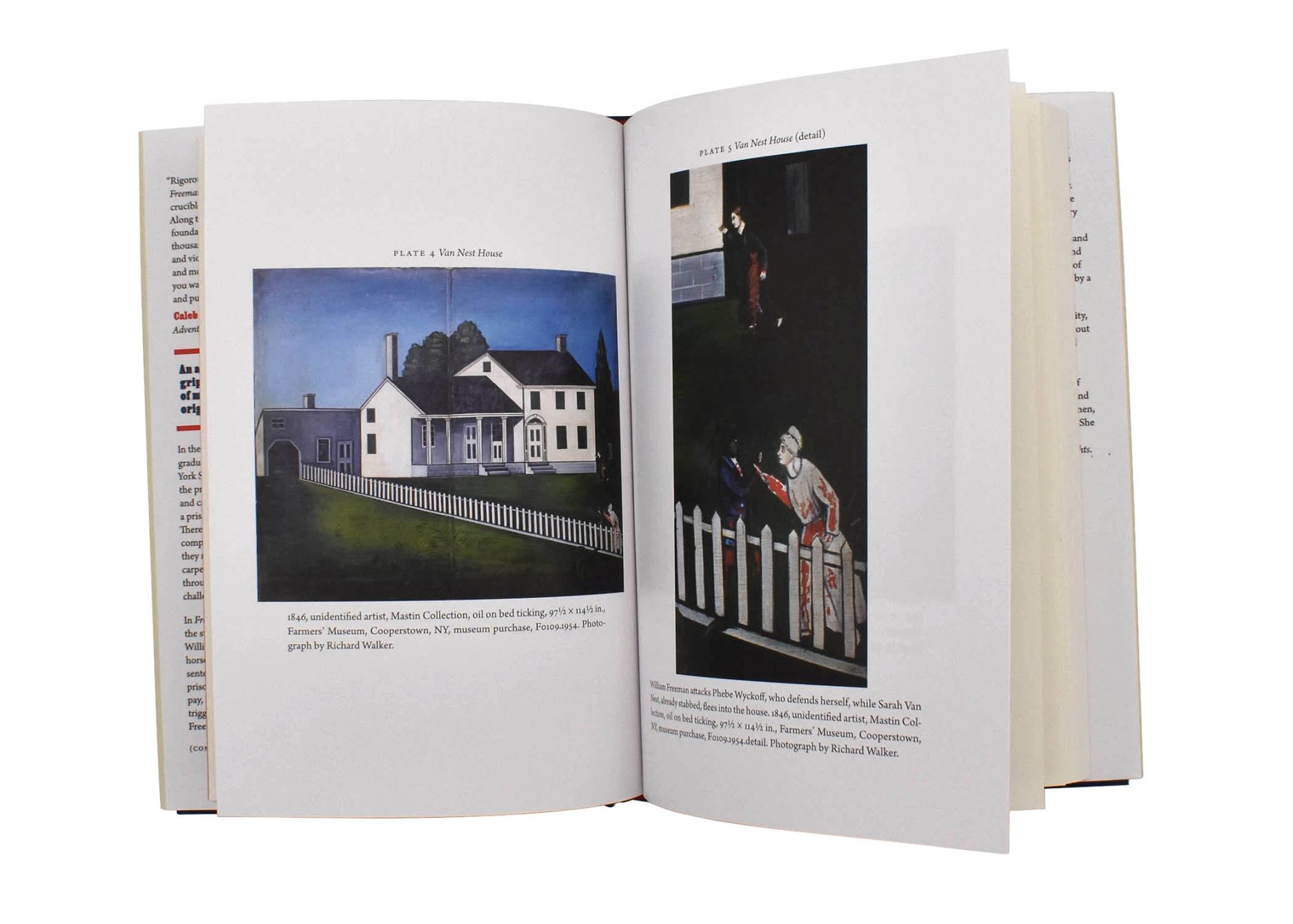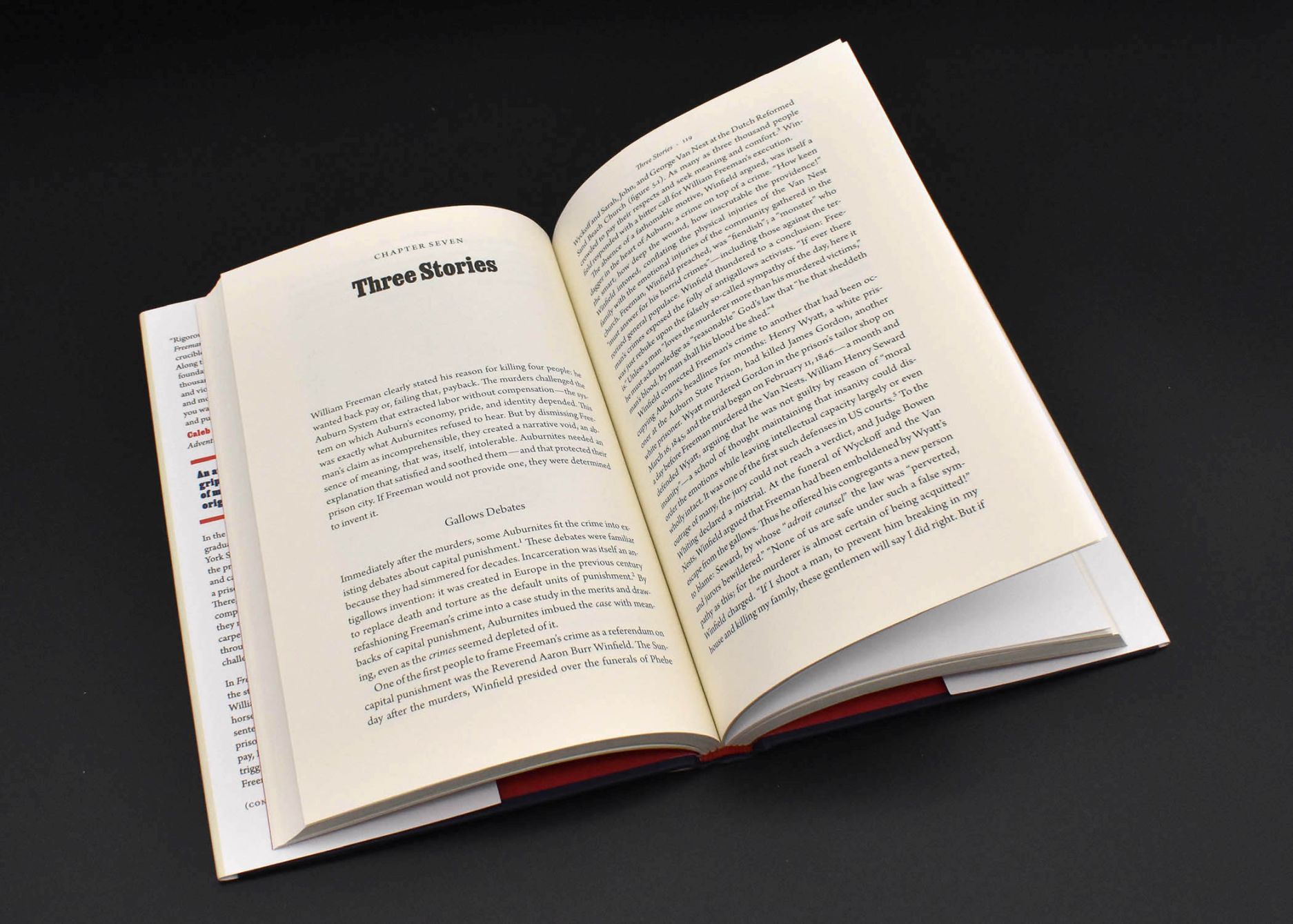Freeman’s Challenge
The Murder That Shook America’s Original Prison for Profit
9780226744230
9780226744377
Freeman’s Challenge
The Murder That Shook America’s Original Prison for Profit
Honored by the 2025 Massachusetts Book Awards in Nonfiction
An award-winning historian tells a gripping, morally complicated story of murder, greed, race, and the true origins of prison for profit.
In the early nineteenth century, as slavery gradually ended in the North, a village in New York State invented a new form of unfreedom: the profit-driven prison. Uniting incarceration and capitalism, the village of Auburn built a prison that enclosed industrial factories. There, “slaves of the state” were leased to private companies. The prisoners earned no wages, yet they manufactured furniture, animal harnesses, carpets, and combs, which consumers bought throughout the North. Then one young man challenged the system.
In Freeman’s Challenge, Robin Bernstein tells the story of an Afro-Native teenager named William Freeman who was convicted of a horse theft he insisted he did not commit and sentenced to five years of hard labor in Auburn’s prison. Incensed at being forced to work without pay, Freeman demanded wages. His challenge triggered violence: first against him, then by him. Freeman committed a murder that terrified and bewildered white America. And white America struck back—with aftereffects that reverberate into our lives today in the persistent myth of inherent Black criminality. William Freeman’s unforgettable story reveals how the North invented prison for profit half a century before the Thirteenth Amendment outlawed slavery “except as a punishment for crime”—and how Frederick Douglass, Harriet Tubman, and other African Americans invented strategies of resilience and resistance in a city dominated by a citadel of unfreedom.
Through one Black man, his family, and his city, Bernstein tells an explosive, moving story about the entangled origins of prison for profit and anti-Black racism.
An award-winning historian tells a gripping, morally complicated story of murder, greed, race, and the true origins of prison for profit.
In the early nineteenth century, as slavery gradually ended in the North, a village in New York State invented a new form of unfreedom: the profit-driven prison. Uniting incarceration and capitalism, the village of Auburn built a prison that enclosed industrial factories. There, “slaves of the state” were leased to private companies. The prisoners earned no wages, yet they manufactured furniture, animal harnesses, carpets, and combs, which consumers bought throughout the North. Then one young man challenged the system.
In Freeman’s Challenge, Robin Bernstein tells the story of an Afro-Native teenager named William Freeman who was convicted of a horse theft he insisted he did not commit and sentenced to five years of hard labor in Auburn’s prison. Incensed at being forced to work without pay, Freeman demanded wages. His challenge triggered violence: first against him, then by him. Freeman committed a murder that terrified and bewildered white America. And white America struck back—with aftereffects that reverberate into our lives today in the persistent myth of inherent Black criminality. William Freeman’s unforgettable story reveals how the North invented prison for profit half a century before the Thirteenth Amendment outlawed slavery “except as a punishment for crime”—and how Frederick Douglass, Harriet Tubman, and other African Americans invented strategies of resilience and resistance in a city dominated by a citadel of unfreedom.
Through one Black man, his family, and his city, Bernstein tells an explosive, moving story about the entangled origins of prison for profit and anti-Black racism.
Reviews
Table of Contents
List of Illustrations
Preface: “Slaves of the State”
Part I: The Prison
1. Sweet Auburn, Loveliest Prison
2. Outer Stone, Inner Rot
3. Skirmishes and Stagnancy
Part II: The Challenge
4. Back Pay and Payback
5. Work
Part III: The Effects
6. Howling Why
7. Three Stories
8. Rivals
9. Roads over Trails
10. Freedom after Freeman
Afterlives
Author’s Note
Acknowledgments
Notes
Index
Preface: “Slaves of the State”
Part I: The Prison
1. Sweet Auburn, Loveliest Prison
2. Outer Stone, Inner Rot
3. Skirmishes and Stagnancy
Part II: The Challenge
4. Back Pay and Payback
5. Work
Part III: The Effects
6. Howling Why
7. Three Stories
8. Rivals
9. Roads over Trails
10. Freedom after Freeman
Afterlives
Author’s Note
Acknowledgments
Notes
Index
Awards
Massachusetts Center for the Book: Mass Book Awards
Honorable Mention
Organization of American Historians: Merle Curti Social History Award
Honorable Mention
Eric Hoffer Book Award: Montaigne Medal
Won
Association of American Publishers: PROSE Book Award
Won





